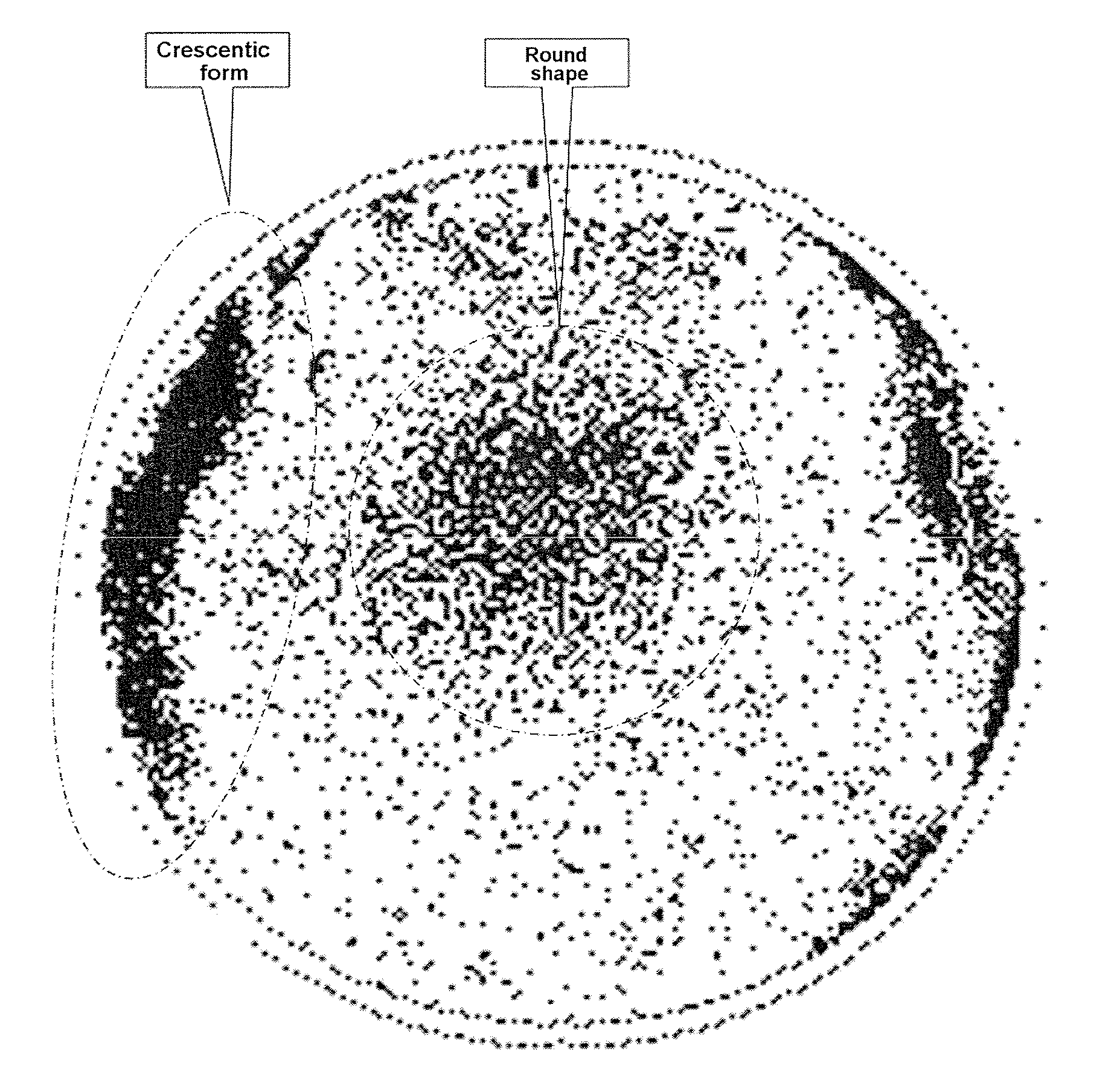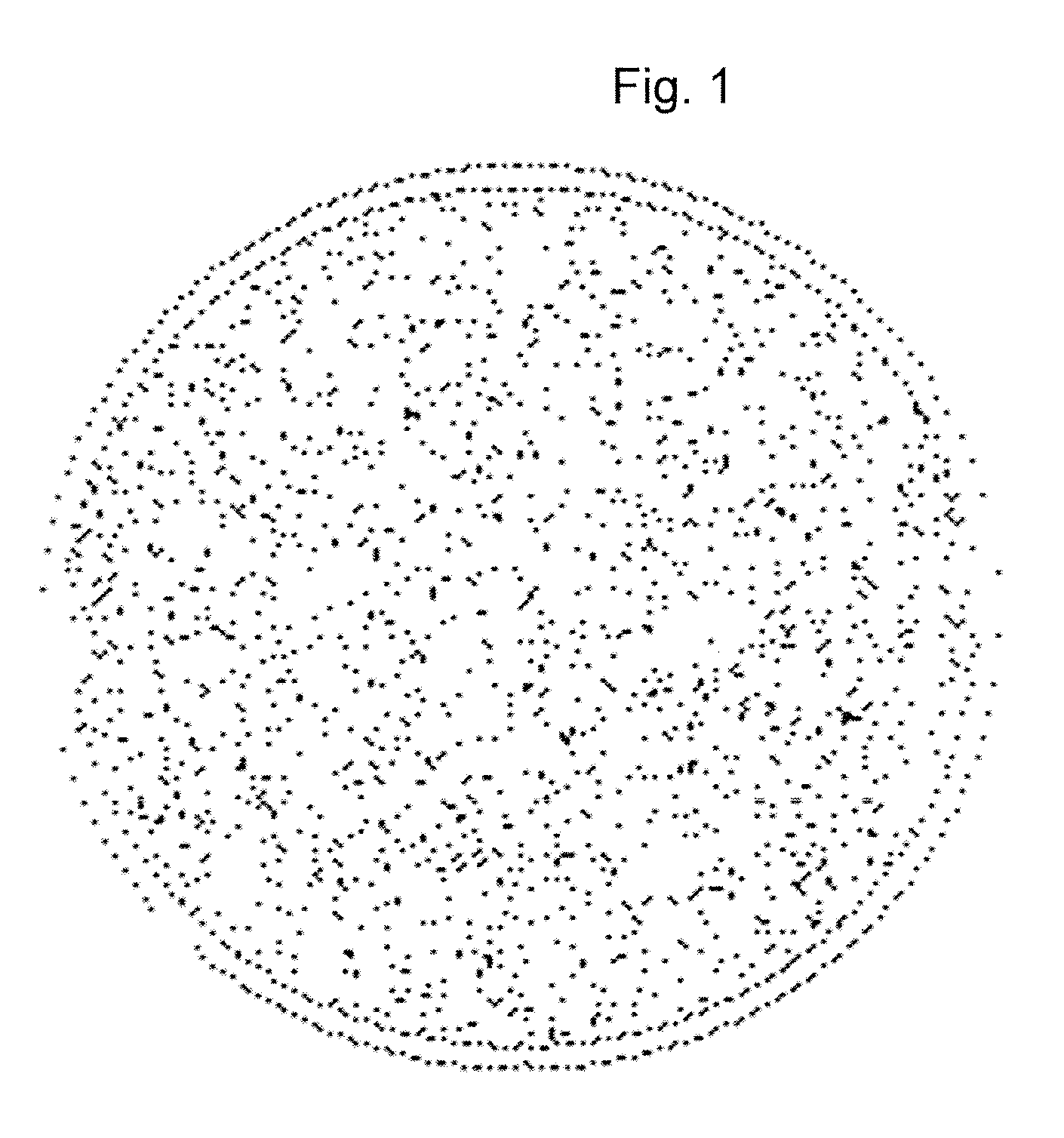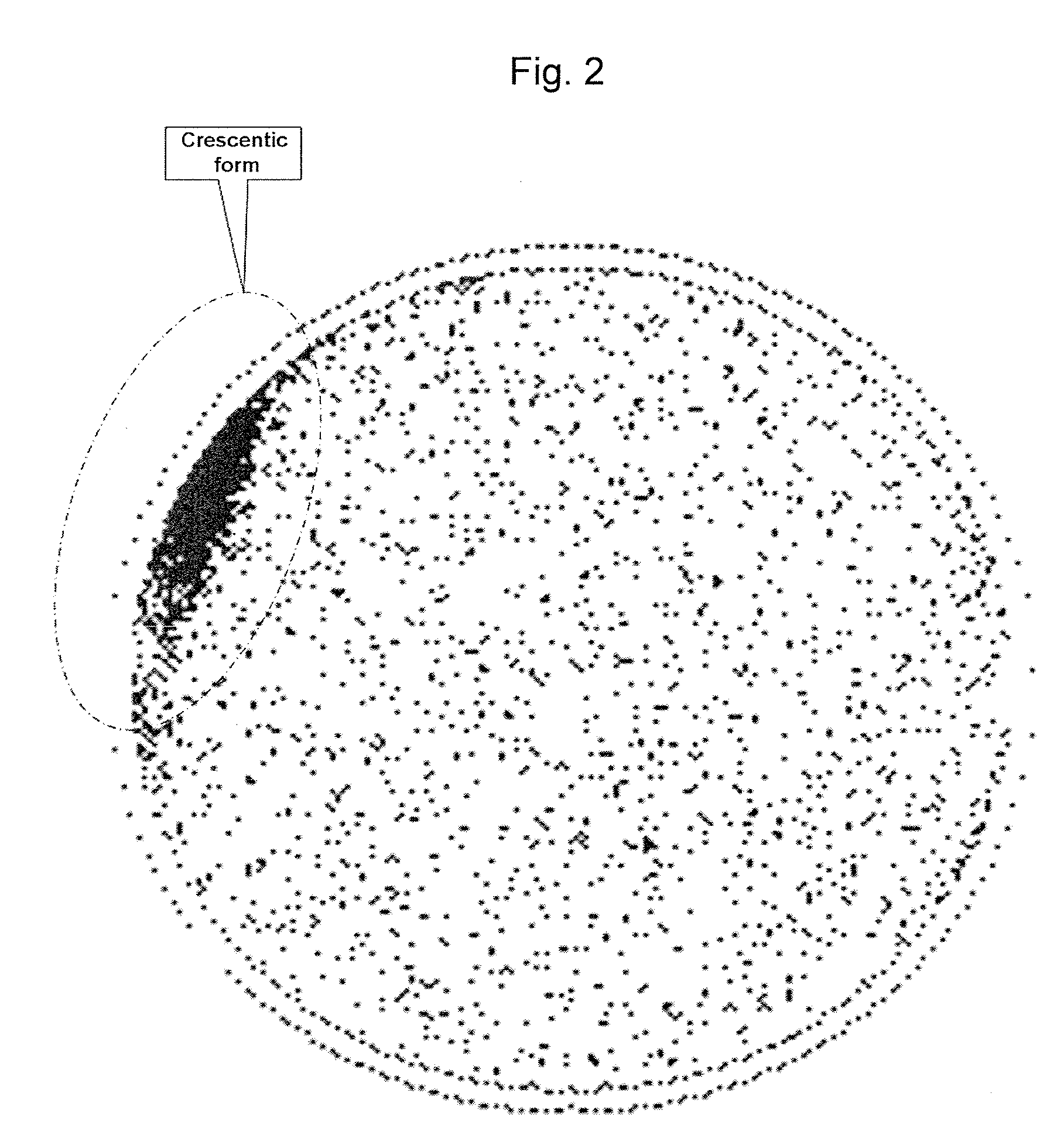Method of manufacturing semiconductor substrate and method of evaluating quality of semiconductor substrate
a technology of semiconductor substrate and manufacturing method, which is applied in the direction of semiconductor/solid-state device testing/measurement, lapping machines, instruments, etc., can solve the problems of contaminating the interior of the finished product substrate, and it is impossible to completely eliminate metal ions in the manufacturing of slurry, so as to reduce metal contamination
- Summary
- Abstract
- Description
- Claims
- Application Information
AI Technical Summary
Benefits of technology
Problems solved by technology
Method used
Image
Examples
example 1
[0060] Four eight-inch sliced silicon wafers were mirror polished with a slurry. Different slurries were employed for each wafer. Table 1 shows the results of measurement of the Cu, Ni, and Fe contents of each slurry by the atomic absorption method. The metal ions in slurry 1 were reduced by the addition of ethylenediaminetetraacetic acid.
TABLE 1Cu (ppb)Ni (ppb)Fe (ppb)Slurry 110101,000Slurry 2101001,000Slurry 3100101,000Slurry 410108,000
[0061] The silicon wafer subjected to mirror polishing with slurry 1 was denoted as sample 1, the silicon wafer subjected to mirror polishing with slurry 2 was denoted as sample 2, the silicon wafer subjected to mirror polishing with slurry 3 was denoted as sample 3, and the silicon wafer subjected to mirror polishing with slurry 4 was denoted as sample 4.
[0062] Table 2 shows the results obtained when each of the samples was inspected for particles with a foreign matter inspection device. In ordinary particle inspection, with respect to an eight-...
example 2
[0063] All of the samples prepared in Example 1 were inspected for metal contamination by the following method.
[0064] First, SC-1 cleaning was continuously conducted five times with a cleaning solution (NH4OH:H2O2:H2O=1:1:5) employed in SC-1 cleaning.
[0065] Next, the total number and the distribution pattern of bright points for each sample were measured with a foreign matter inspection device. The results are given in Table 3 and FIGS. 1 to 4. Table 3 shows the total number of bright points in each sample. FIGS. 1 to 4 show the distribution patterns of bright points in each sample. Taking into account the passing standard in particle inspection, samples with a total number of bright points not exceeding 3,000 were determined as a nondefective product.
TABLE 3Total number of bright pointsSample 11722Sample 24415Sample 3Equal to or greater than 30,000Sample 4Equal to or greater than 30,000
[0066] As indicated in Table 3, even among samples that passed the particle inspection, a met...
example 3
[0071] The surfaces of silicon wafers following mirror polishing were etched by being continuously SC-1 cleaned three times with a cleaning solution (NH4OH:H2O2:H2O=1:1:5) employed in SC-1 cleaning. A foreign matter inspection device was employed to detect bright points on the surfaces thereof; the results are given in FIG. 5. As indicated in FIG. 5, an abnormal portion (the “X” portion in FIG. 5) in which bright points were densely packed was observed in the peripheral portion in a map of bright points observed by the foreign matter inspection device. Then, this peculiar pattern was observed by scanning electron microscopy (SEM). The results are given in FIG. 6.
[0072] In the results of SEM observation as shown in FIG. 6, the abnormal portion was found to be a collection of pits. Observation at greater magnification revealed each pit to have a orientation. On this basis, the pits were presumed to have been caused by Cu.
PUM
 Login to View More
Login to View More Abstract
Description
Claims
Application Information
 Login to View More
Login to View More - R&D
- Intellectual Property
- Life Sciences
- Materials
- Tech Scout
- Unparalleled Data Quality
- Higher Quality Content
- 60% Fewer Hallucinations
Browse by: Latest US Patents, China's latest patents, Technical Efficacy Thesaurus, Application Domain, Technology Topic, Popular Technical Reports.
© 2025 PatSnap. All rights reserved.Legal|Privacy policy|Modern Slavery Act Transparency Statement|Sitemap|About US| Contact US: help@patsnap.com



